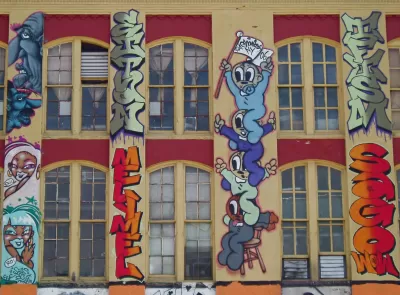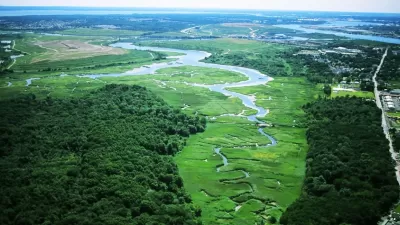Over the last decade, many historic buildings and cultural institutions throughout New York City have disappeared. The result has been the transformation of neighborhoods and the city’s character.

Nathan Kensinger looks at ten buildings that have disappeared from New York City in the last decade, and the effect of those losses on neighborhoods. "As new development projects and rezonings reshaped the city, it also lost countless historic buildings and cultural institutions; dive bars, bungalows, churches, and even entire neighborhoods were wiped off the map."
In Harlem, Manhattanville is an industrial neighborhood that is quickly disappearing as Columbia University expands its campus. The loss, says Kensinger, is buildings and other structures that capture the essence of the city and connect the present to the past. "What has been erased in Manhattanville is the same type of vernacular architecture that is vanishing throughout New York City: diners and tenement buildings, cobblestone streets and slaughterhouses, auto body shops and horse stables.”
He writes about a variety of other places that are completely or mostly gone, including the Cedar Grove Beach Club in Staten Island, the 5 Pointz warehouse and graffiti haven in Long Island City, and the S.W. Bowne Grain Storehouse on the Gowanus Canal.
"New York has always been a dynamic place that changes and reinvents itself. But these recent developments represent something different, where billionaires and politicians conspired to maximize private profits and enrich private developers by destroying thousands of small businesses and dozens of neighborhoods," notes Kensinger.
FULL STORY: A decade of destruction in New York City

Alabama: Trump Terminates Settlements for Black Communities Harmed By Raw Sewage
Trump deemed the landmark civil rights agreement “illegal DEI and environmental justice policy.”

Study: Maui’s Plan to Convert Vacation Rentals to Long-Term Housing Could Cause Nearly $1 Billion Economic Loss
The plan would reduce visitor accommodation by 25% resulting in 1,900 jobs lost.

Planetizen Federal Action Tracker
A weekly monitor of how Trump’s orders and actions are impacting planners and planning in America.

Study Links Covid and Poor Driving
The effects of the virus, including ‘brain fog,’ can make driving more difficult and dangerous.

Waymo Gets Permission to Map SF’s Market Street
If allowed to operate on the traffic-restricted street, Waymo’s autonomous taxis would have a leg up over ride-hailing competitors — and counter the city’s efforts to grow bike and pedestrian on the thoroughfare.

Parklet Symposium Highlights the Success of Shared Spaces
Parklets got a boost during the Covid-19 pandemic, when the concept was translated to outdoor dining programs that offered restaurants a lifeline during the shutdown.
Urban Design for Planners 1: Software Tools
This six-course series explores essential urban design concepts using open source software and equips planners with the tools they need to participate fully in the urban design process.
Planning for Universal Design
Learn the tools for implementing Universal Design in planning regulations.
Caltrans
Smith Gee Studio
Institute for Housing and Urban Development Studies (IHS)
City of Grandview
Harvard GSD Executive Education
Toledo-Lucas County Plan Commissions
Salt Lake City
NYU Wagner Graduate School of Public Service




























